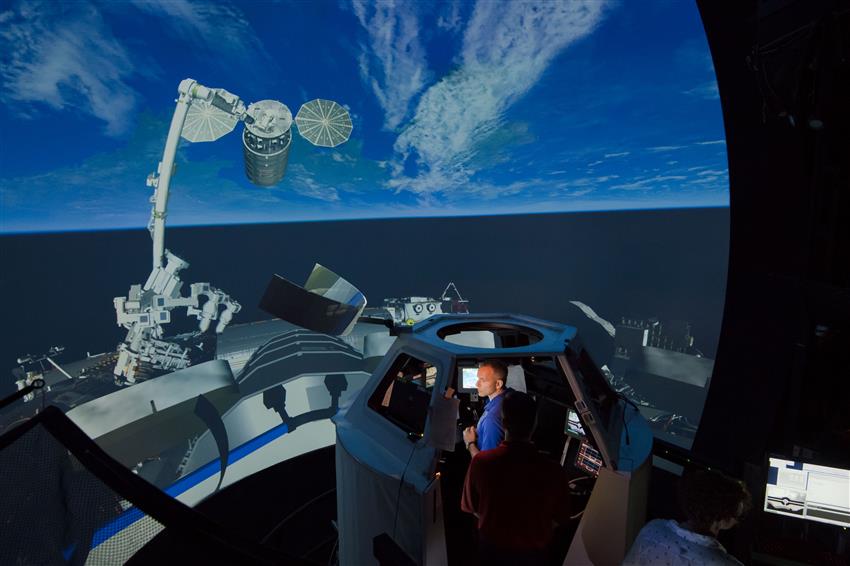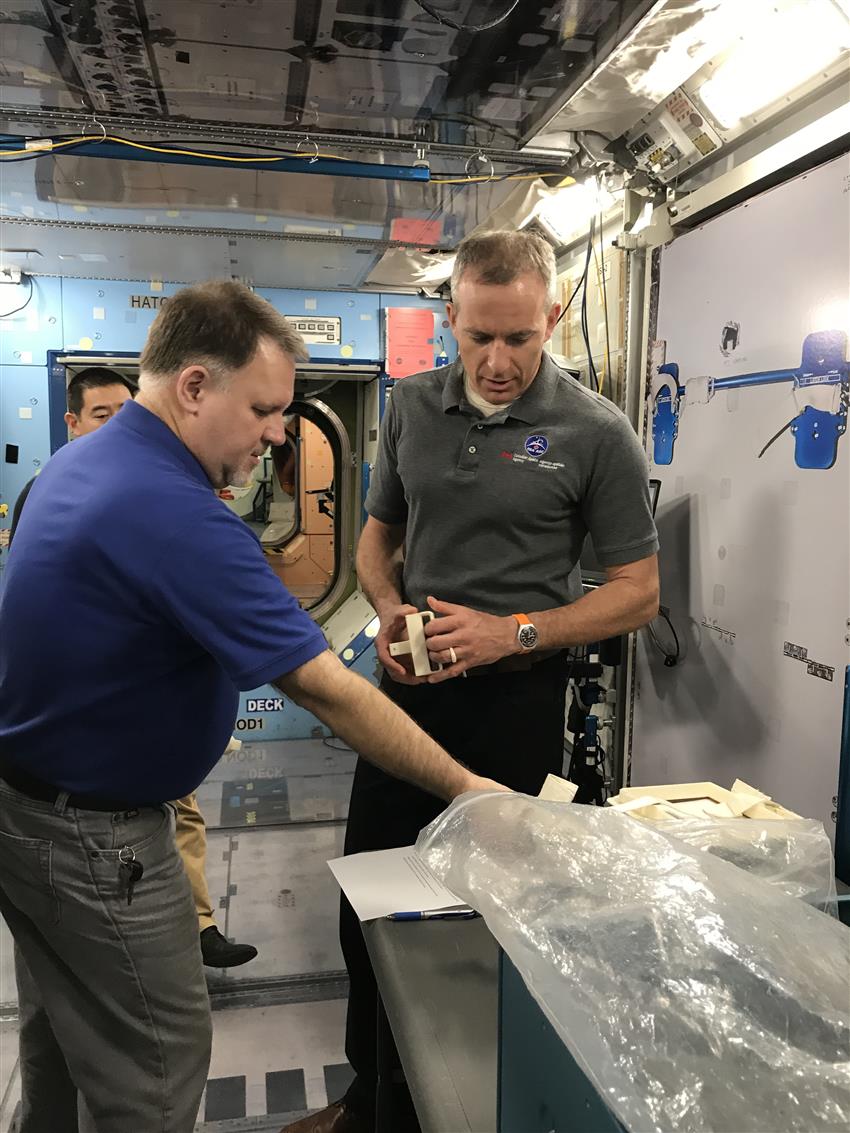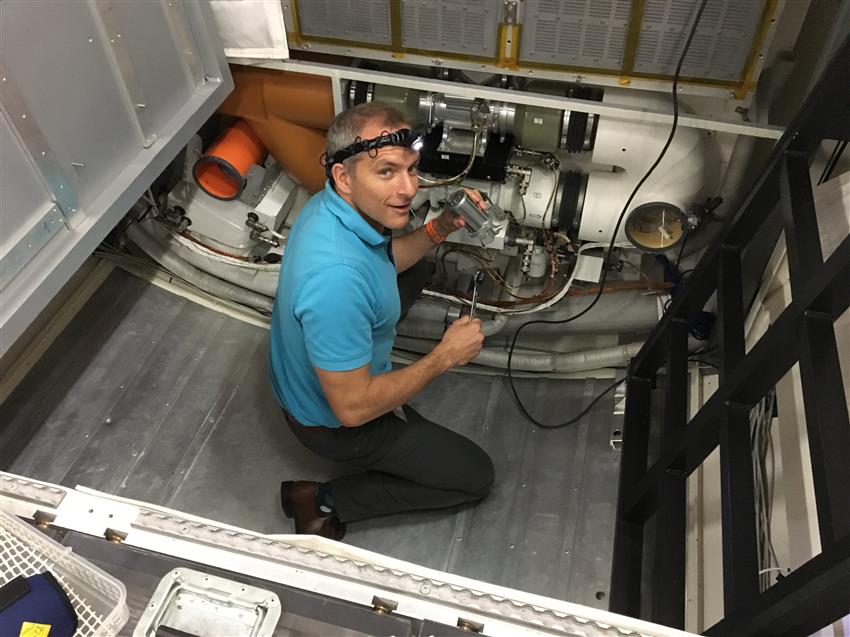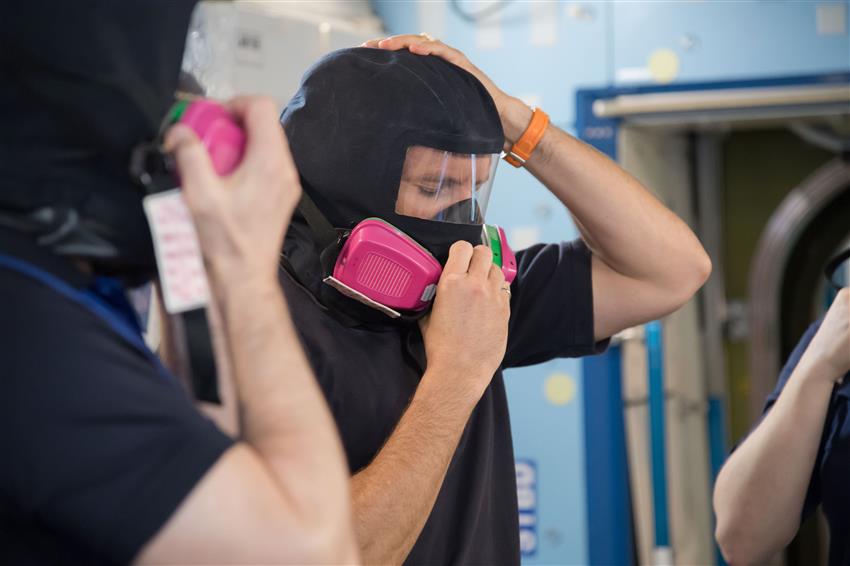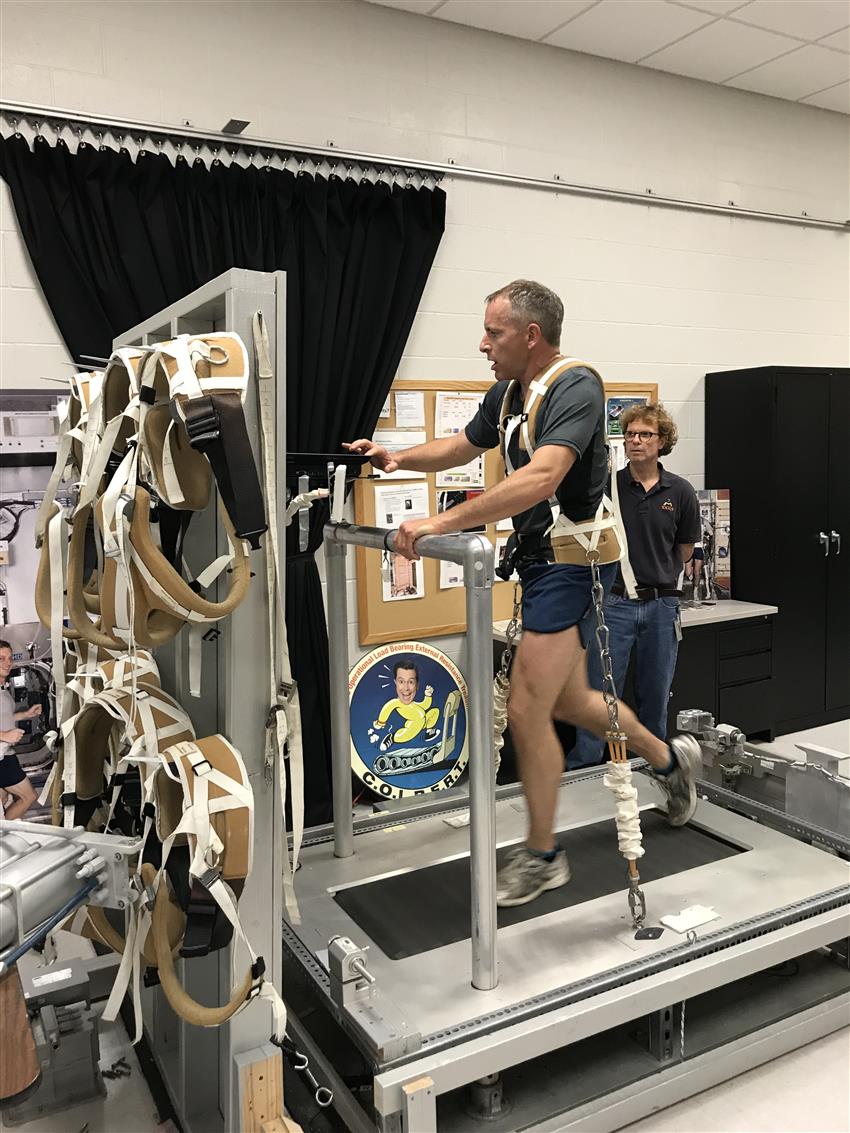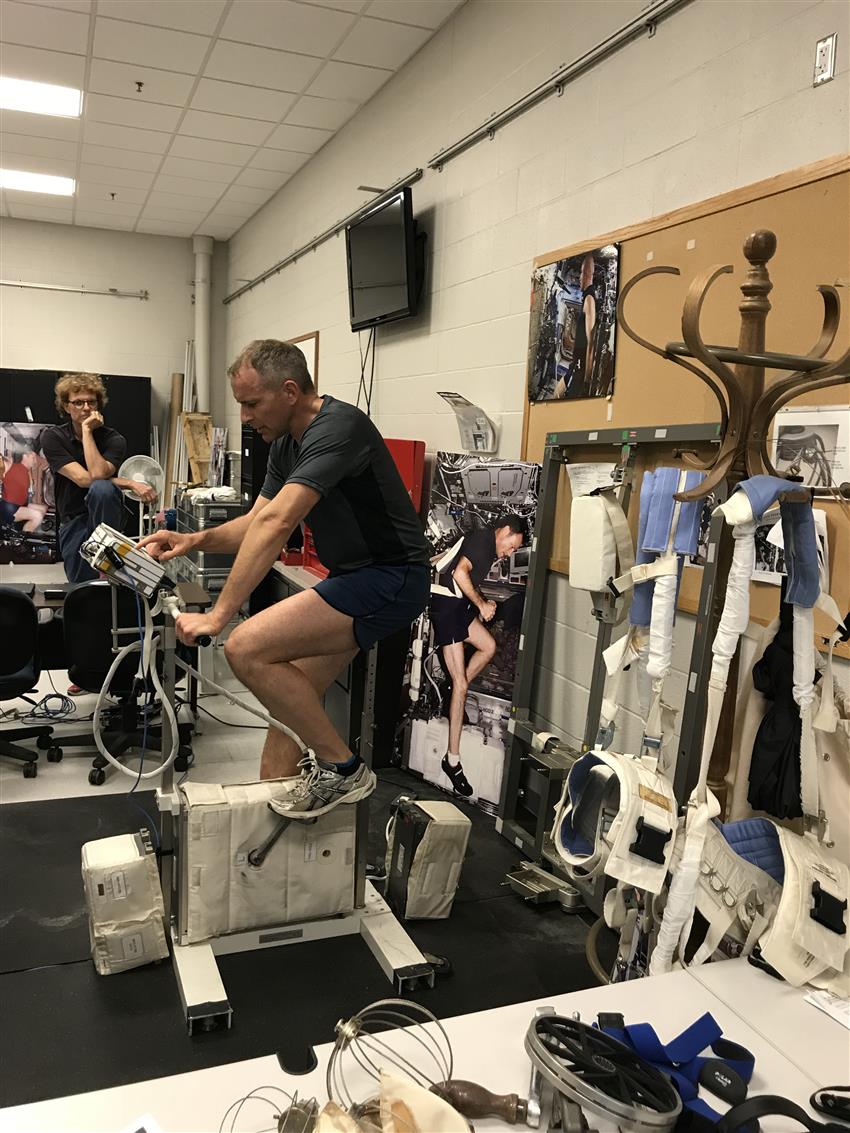Ten things you need to know about David Saint-Jacques' mission training

Credit: Canadian Space Agency (CSA)
CSA astronaut David Saint-Jacques' mission, Expedition 58, will launch at the end of 2018, but he's been preparing for a long time already. Here is a glimpse at some of the types of training David is doing to get ready to go to space.
Space flight: gearing up for the trip of a lifetime
The Russian Soyuz is currently the only space vehicle transporting humans between Earth and the International Space Station (ISS). It is also used as the Station's rescue vessel in the event of an emergency.
1. Flying the Soyuz
Since David is the Soyuz co-pilot for Expedition 58, he is learning all about the spacecraft and practising various scenarios in a Soyuz simulator at the Gagarin Research and Test Cosmonaut Training Center in Russia.
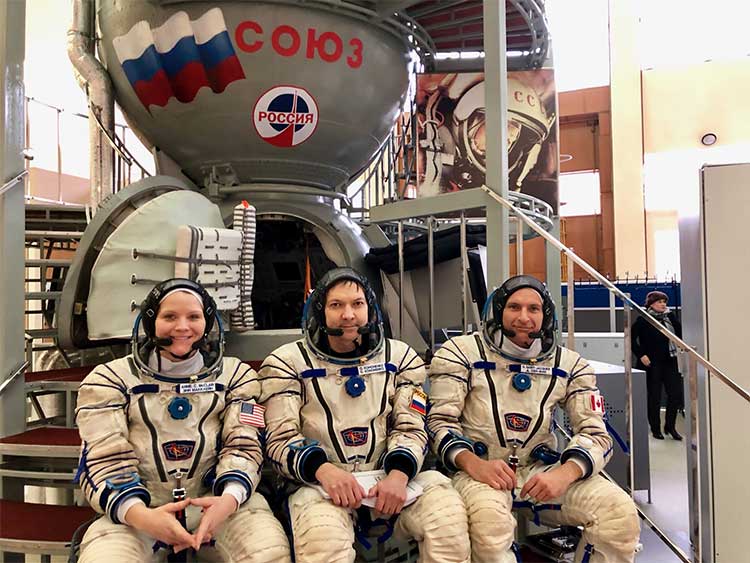
2018-01-29 - David Saint-Jacques and his crewmates Oleg Kononenko (Roscosmos) and Anne McClain (NASA) take training in a Soyuz simulator in Star City. (Credit: CSA)
During take-off and other phases of flight, astronauts experience strong acceleration. The centrifuge replicates that acceleration to get astronauts familiar with what they will experience aboard the Soyuz.
2. Surviving a landing in a remote location
At the end of a mission aboard the ISS, astronauts return to Earth to a designated location in the steppes of Kazakhstan. However, if the Soyuz deviates from its trajectory, they must be prepared to survive in remote environments like the sea while they wait for the ground crew to arrive.
Life in orbit: preparing to live and work on the ISS
In space, astronauts play many roles. Whether they are conducting science experiments, operating robotics or doing maintenance tasks, astronauts have to be able to operate and repair the various systems on the Space Station.
3. Operating science equipment
The Space Station is first and foremost a big laboratory in orbit. David will do many science experiments during his mission. He has to learn how to use the equipment properly in order to do this important job.
4. Spacewalk
David Saint-Jacques, like all astronauts going to space, trains at NASA's Neutral Buoyancy Laboratory (NBL) to get ready for spacewalks. The NBL is equipped with a 12-metre deep pool that is big enough to submerge full-scale models of components of the ISS! Neutral buoyancy is currently the best method for astronauts to train for this activity.
5. Robotics
Operating Canadarm2 is among the most delicate activities of a mission onboard the ISS. Thankfully, the CSA has a state-of-the-art robotics training centre to provide David with the training he needs! Now that he is focusing on mission-specific activities, the Cupola robotics workstation simulator is very useful to practise complex manoeuvres like a cosmic catch of an unmanned capsule.
6. ISS handyman
David spends a lot of time learning everything there is to know about the various systems (power, oxygen, CO₂, thermal control, air conditioning, radio, airlock, etc.) and, of course, how to take care of all possible malfunctions!
7. Emergency response
"Hope for the best, but plan for the worst" could be an astronaut's motto. David has to be ready for any emergency situation associated with space flight, such as depressurization, fires or air contamination.
8. Exercising in orbit
Astronauts have to exercise at least two hours a day on the ISS to compensate for the negative effects of microgravity on their bodies. The kind of equipment used in microgravity is different from what is normally used on Earth, so David needs to know how it works and adjust the way he exercises before leaving.
9. Photography lessons
Astronauts have a unique perspective from the Space Station, and many of them seize the opportunity to take pictures of our beautiful planet. David is trained on how to use the different cameras available on the ISS.
Did you know?
10. Eating on the ISS
Before his mission, David needs to taste the food he will eat on the ISS. All Space Station crewmembers are provided with a standard menu, but they are also allowed to request additional food items, as long as they meet the criteria.
Explore further
- Date modified:





